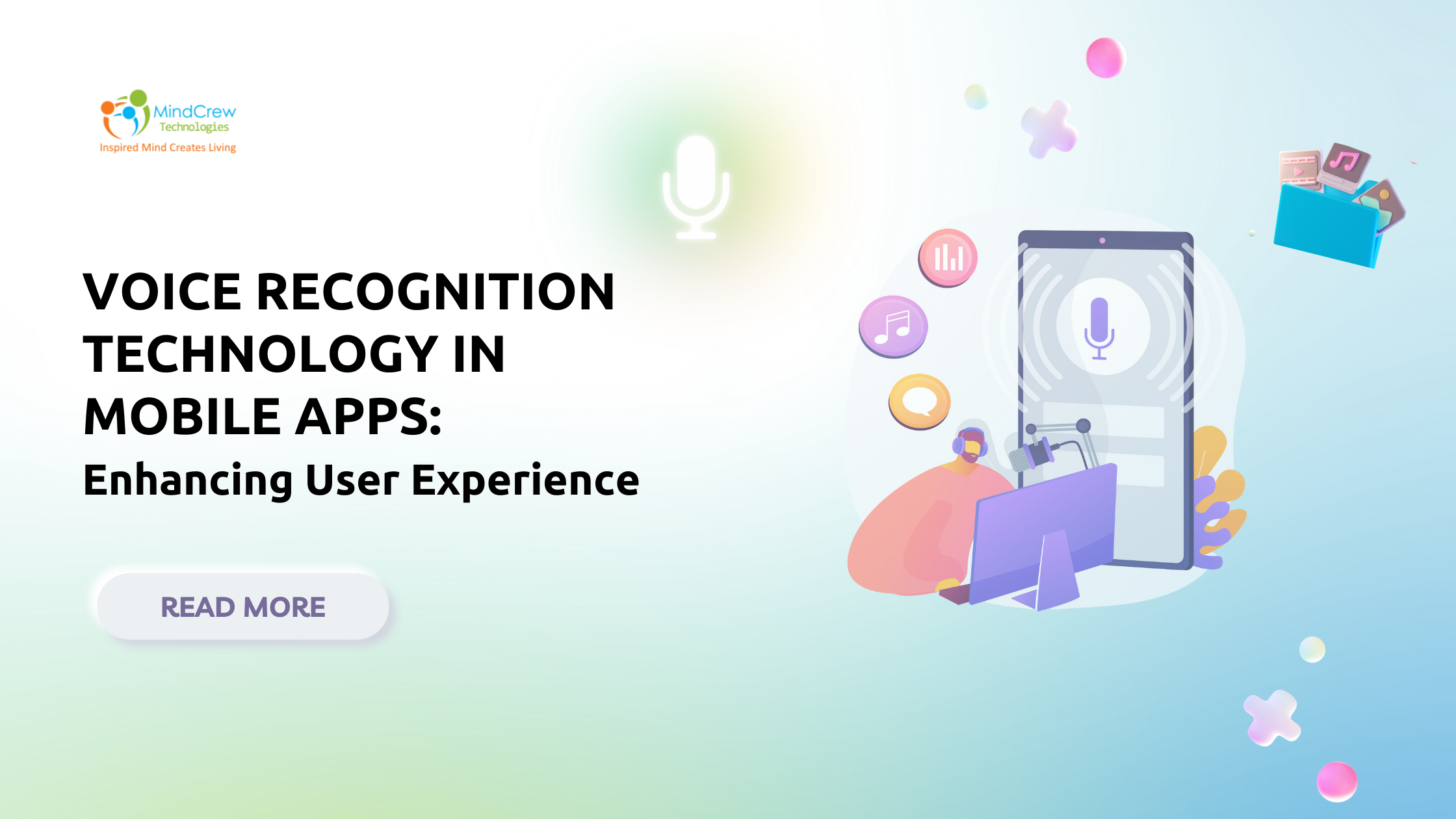Voice Recognition Technology in Mobile Apps: Enhancing User Experience
Voice recognition technology has come a long way since its inception, transforming from a novel feature to an integral part of modern mobile apps. This technology has significantly improved user experience, making interactions more intuitive and accessible. In this blog, we will delve into the nuances of voice recognition technology in mobile apps, exploring its benefits, applications, challenges, and future trends. We’ll also discuss how it enhances user experience and provide SEO-friendly keywords throughout.
Introduction to Voice Recognition Technology
Voice recognition technology, also known as speech recognition, enables devices to understand and process human speech. By converting spoken language into digital data, it allows users to interact with their devices hands-free, providing a seamless and efficient user experience. Major tech companies like Apple, Google, and Amazon have pioneered voice recognition through their virtual assistants – Siri, Google Assistant, and Alexa, respectively.
Evolution of Voice Recognition Technology
Voice recognition technology has seen significant advancements over the years. Early systems were limited by their vocabulary and required precise enunciation. However, with the advent of machine learning and artificial intelligence, modern voice recognition systems have become more accurate, context-aware, and capable of understanding natural language.
Key Milestones:
- 1952: The first voice recognition system, “Audrey,” was developed by Bell Labs, recognizing digits spoken by a single voice.
- 1990s: Dragon Dictate introduced the first consumer speech recognition product.
- 2011: Apple’s Siri brought voice recognition into the mainstream, followed by Google Now and Amazon’s Alexa.
Benefits of Voice Recognition Technology in Mobile Apps
Voice recognition technology offers numerous benefits that enhance user experience in mobile apps:
- Convenience and Accessibility:
- Hands-Free Operation: Users can perform tasks without physically interacting with their devices, which is especially useful while driving or multitasking.
- Accessibility: Voice recognition makes mobile apps more accessible to individuals with disabilities, allowing them to navigate and use apps effortlessly.
- Improved Efficiency:
- Faster Input: Speaking is generally faster than typing, enabling users to complete tasks more quickly.
- Multitasking: Users can dictate messages, set reminders, and search the web while performing other activities.
- Personalization:
- Context-Aware Responses: Modern voice recognition systems use context and user preferences to provide personalized responses, enhancing the overall user experience.
- Natural Language Processing (NLP): NLP allows users to interact with apps in a conversational manner, making the experience more intuitive.
Applications of Voice Recognition Technology in Mobile Apps
Voice recognition technology is being integrated into various types of mobile apps, enhancing functionality and user experience across different domains:
- Virtual Assistants:
- Siri, Google Assistant, Alexa: These assistants can perform a wide range of tasks, from setting alarms to controlling smart home devices, all through voice commands.
- Navigation and Mapping:
- Google Maps, Waze: Users can input destinations, request directions, and receive real-time traffic updates hands-free.
- Healthcare:
- MyFitnessPal, WebMD: Voice recognition allows users to log meals, track fitness activities, and seek medical advice without typing.
- E-Commerce:
- Amazon, eBay: Users can search for products, place orders, and track shipments using voice commands.
- Entertainment:
- Spotify, Netflix: Voice commands can be used to play music, search for shows, and control playback.
- Productivity:
- Evernote, Microsoft Office: Voice recognition facilitates note-taking, drafting documents, and setting reminders, boosting productivity.
Enhancing User Experience with Voice Recognition Technology
Voice recognition technology significantly enhances user experience by making interactions more natural, efficient, and personalized. Here are some ways it achieves this:
- Natural User Interface (NUI):
- Voice recognition transforms the user interface into a more natural and intuitive form. Users can communicate with apps as they would with another person, reducing the learning curve and making the experience more engaging.
- Speed and Efficiency:
- By enabling users to input commands and data faster than typing, voice recognition technology increases the speed and efficiency of completing tasks. This is particularly beneficial for time-sensitive applications such as navigation and communication.
- Personalization and Context-Awareness:
- Modern voice recognition systems use machine learning to understand user preferences and context. This allows apps to provide more relevant and personalized responses, enhancing the overall user experience.
- Accessibility:
- Voice recognition technology makes mobile apps more accessible to a wider audience, including individuals with disabilities. This inclusivity enhances user satisfaction and broadens the app’s user base.
- Reduced Cognitive Load:
- By allowing users to interact with apps through speech, voice recognition reduces the cognitive load associated with traditional input methods. This makes the user experience more enjoyable and less stressful.
Challenges of Implementing Voice Recognition Technology
Despite its benefits, integrating voice recognition technology into mobile apps comes with several challenges:
- Accuracy and Reliability:
- Voice recognition systems must accurately interpret spoken commands, which can be affected by accents, background noise, and speech variations. Ensuring high accuracy and reliability is crucial for a positive user experience.
- Privacy and Security:
- Voice data can be sensitive, and apps must ensure that user data is protected. Implementing robust privacy and security measures is essential to gain user trust.
- Context Understanding:
- While modern systems are better at understanding context, there are still limitations. Ensuring that voice recognition systems can accurately interpret context and provide relevant responses remains a challenge.
- Integration with Existing Systems:
- Integrating voice recognition technology with existing app systems and ensuring seamless operation can be complex and resource-intensive.
Future Trends in Voice Recognition Technology
The future of voice recognition technology in mobile apps looks promising, with several trends set to shape its evolution:
- Advancements in AI and Machine Learning:
- Continued advancements in AI and machine learning will further improve the accuracy, reliability, and context-awareness of voice recognition systems.
- Multilingual Support:
- Expanding multilingual support will make voice recognition technology more accessible to non-English speakers, broadening its user base.
- Voice Biometrics:
- Voice biometrics will enhance security by using unique voice patterns for user authentication, reducing the risk of unauthorized access.
- Integration with IoT:
- Voice recognition will play a key role in the Internet of Things (IoT), allowing users to control smart home devices and other IoT-enabled systems through voice commands.
- Enhanced Personalization:
- Future voice recognition systems will offer even greater personalization, leveraging user data to provide highly tailored responses and recommendations.
Conclusion
Voice recognition technology has revolutionized the way users interact with mobile apps, offering a more natural, efficient, and personalized experience. Despite the challenges, its integration across various domains has proven immensely beneficial, enhancing convenience, accessibility, and user satisfaction. As advancements in AI and machine learning continue to drive innovation, the future of voice recognition technology in mobile apps promises even greater enhancements in user experience.
For developers and businesses, embracing voice recognition technology is no longer optional but a necessity to stay competitive and meet the evolving expectations of users. By addressing the challenges and leveraging future trends, mobile apps can harness the full potential of voice recognition technology to deliver an exceptional user experience.







